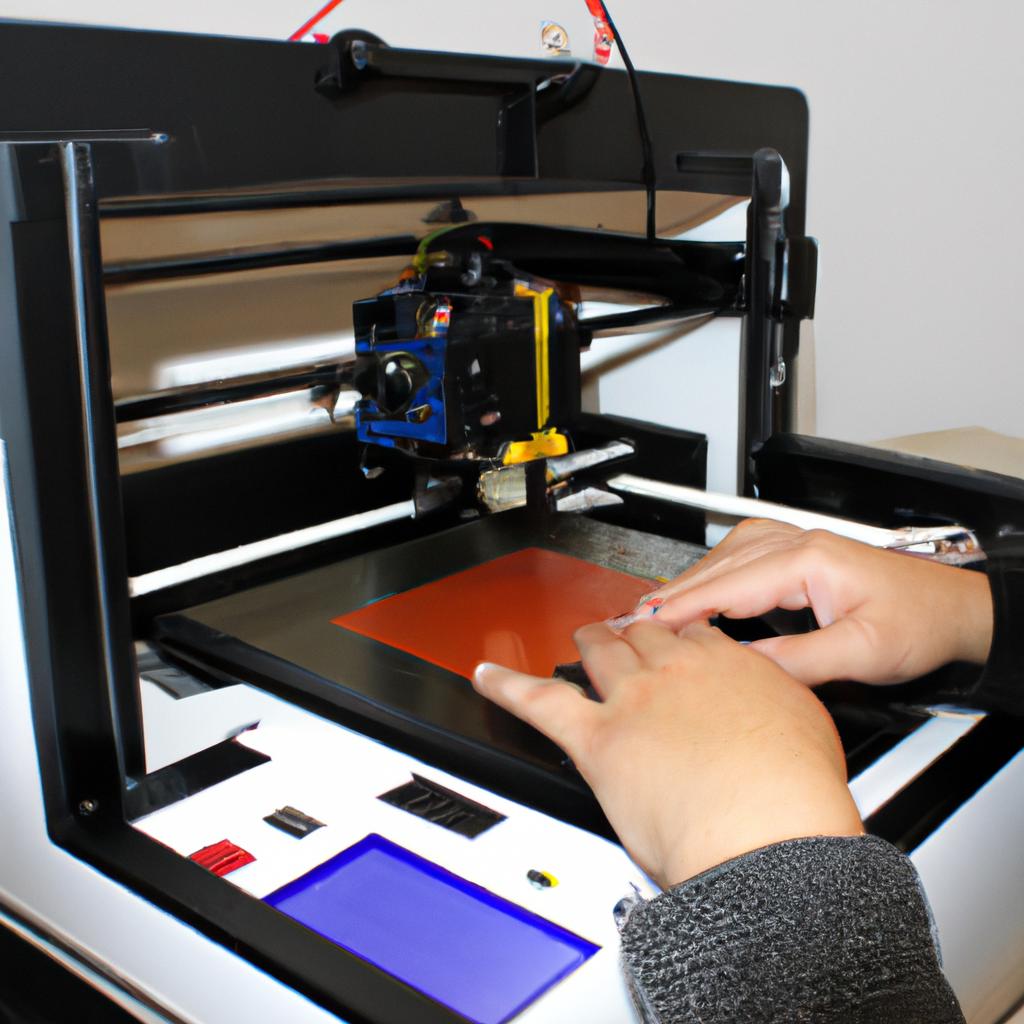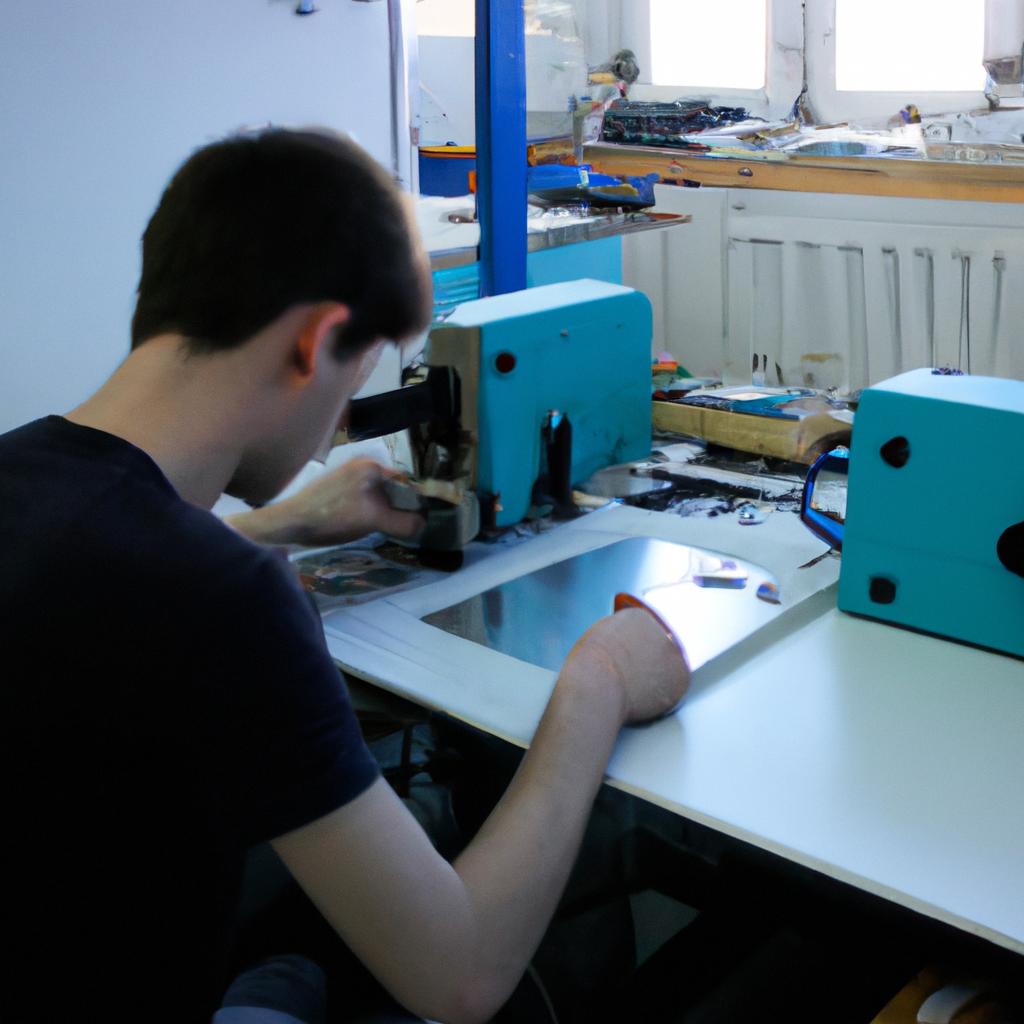Experimental design plays a critical role in enhancing the quality and validity of research and development studies. By systematically manipulating variables, controlling for confounding factors, and employing rigorous statistical analysis, experimental designs allow researchers to draw reliable conclusions about causal relationships between variables. For instance, consider a hypothetical scenario where a pharmaceutical company is testing […]
Iterative design, an essential component of research and development (R&D), plays a crucial role in the advancement of various industries. By continuously refining prototypes through repetitive cycles of testing and evaluation, iterative design enables researchers to improve product functionality and performance over time. This article explores the significance of iterative design in R&D processes, particularly […]
Research and Development (R&D) funding strategies play a crucial role in driving innovation and shaping the future of industries. Effective allocation of R&D funds enables organizations to develop cutting-edge technologies, create new products or services, enhance existing offerings, and stay ahead of competition. This article examines different funding strategies employed by companies to support their […]
The Small Business Research Loan program allows for investments of $75,000-$250,000 to promising life science companies that are in the beginning of their life located in North Carolina. The program helps: Inception of business and other related actions designed to assist the business in positioning itself for early or startup investment or partnership. Research and development […]
Research studies play a crucial role in the advancement of knowledge and innovation. They provide valuable insights, contribute to scientific understanding, and shape the direction of research and development (R&D) efforts across various fields. This article explores the impact of research studies on R&D by examining their influence on decision-making processes, resource allocation strategies, and […]
3D printing technology has revolutionized the field of research and development (R&D) prototyping, offering a comprehensive solution for creating complex designs and functional prototypes. This article aims to provide a thorough overview of advancements in 3D printing techniques and their applications in R&D prototyping. To illustrate the significance of these advancements, consider an example where […]
The process of prototyping plays a crucial role in research and development (R&D) efforts, as it serves to enhance innovation and efficiency. By providing a tangible representation of an idea or concept, prototypes enable researchers and developers to test and refine their designs before committing significant resources towards production. This article explores the significance of […]
The field of research and development (R&D) has experienced significant transformations in recent years, largely driven by rapid technological advancements. These advancements have not only revolutionized the way we conduct research but also opened up new avenues for innovation funding. For instance, consider a hypothetical case study where an R&D team is working on developing […]
Artificial Intelligence (AI) has revolutionized various fields, and its impact on research and development (R&D) is no exception. In recent years, AI has emerged as a powerful tool in assisting researchers and scientists in their quest for innovative solutions. This article delves into the realm of AI applications specifically in R&D technical reports, highlighting the […]
In today’s rapidly evolving technological landscape, research and development (R&D) innovation funding has become a critical aspect for organizations seeking to stay competitive and drive growth. Allocating resources towards R&D initiatives not only facilitates the discovery of new knowledge and breakthrough technologies but also empowers companies to create innovative products and services that meet changing […]
The field of research and development (R&D) plays a crucial role in advancing scientific knowledge, technological innovations, and societal progress. However, the pursuit of new discoveries and breakthroughs must be conducted within an ethical framework that safeguards the rights and well-being of all individuals involved. This article aims to explore the moral considerations that underpin […]
Sampling methods play a crucial role in research and development studies, as they determine the representativeness of the data collected. By selecting a subset of individuals or objects from a larger population, researchers can draw meaningful conclusions about the whole group. For instance, imagine a pharmaceutical company conducting clinical trials for a new drug to […]
Analytics plays a crucial role in the field of research and development (R&D), providing valuable insights that drive innovation and decision-making. By utilizing various analytical techniques, researchers can extract meaningful patterns from vast amounts of data collected during experiments or projects. For instance, imagine a pharmaceutical company conducting R&D to develop a new drug for […]
Technical reports play a pivotal role in the realm of research and development (R&D), serving as an essential means of disseminating information, sharing findings, and documenting advancements. These reports provide detailed insights into various aspects of R&D projects, ranging from experimental procedures to data analysis methodologies. For instance, imagine a hypothetical scenario where a team […]
Machine learning has emerged as a revolutionary technology in the field of research and development (R&D). Its application extends across various industries, including healthcare, finance, and manufacturing. One such example is its utilization in drug discovery. By analyzing vast amounts of data from clinical trials and past research studies, machine learning algorithms can identify potential […]
Data mining is a powerful tool that has revolutionized the way we extract meaningful insights from large datasets. By applying advanced statistical and machine learning techniques, researchers and developers can uncover hidden patterns, relationships, and trends within vast amounts of data. This article focuses on the importance of research and development technical reports in advancing […]
In today’s highly competitive business landscape, innovation is crucial for organizations to stay ahead. Research and development (R&D) plays a pivotal role in fostering innovation by generating groundbreaking ideas and technological advancements. However, transforming these ideas into practical solutions requires adequate funding, which can often be a challenge for R&D projects. One avenue that many […]
In recent years, the field of research and development (R&D) has experienced significant growth as companies seek to stay competitive in an ever-evolving market. However, one critical challenge that often hampers R&D initiatives is the availability of adequate funding for innovation projects. This article aims to explore various financing options available for R&D activities, shedding […]
In the field of research and development, data analysis plays a vital role in extracting meaningful insights. By examining large sets of data, researchers are able to identify patterns, trends, and relationships that inform decision-making processes. For instance, consider a hypothetical case study where a pharmaceutical company is conducting clinical trials for a new drug. […]
Data analysis plays a crucial role in research and development, enabling researchers to uncover valuable insights from complex datasets. By applying statistical techniques and computational algorithms, data analysts can extract meaningful patterns, trends, and relationships that might otherwise remain hidden. This article explores the significance of data analysis in research studies and discusses how it […]
Product testing is a critical stage in the research and development (R&D) process, aiming to ensure that prototypes meet their intended design specifications and function effectively. Through rigorous testing methodologies, researchers can identify potential flaws or weaknesses in prototypes before they are mass-produced. This comprehensive guide explores various product testing techniques employed in R&D prototyping, […]
In today’s rapidly evolving technological landscape, research and development (R&D) holds the key to driving innovation across various industries. However, one of the major challenges faced by researchers and innovators is securing funding for their projects. This article aims to shed light on the potential solution that government grants offer in unlocking funding for R&D […]
Natural Language Processing (NLP) has emerged as a prominent field within the realm of research and development. Its application in various domains, such as healthcare, finance, and social media analysis, has revolutionized the way we interact with technology. One notable example is its utilization in medical research, where NLP techniques are employed to extract valuable […]
Prototype manufacturing plays a crucial role in the research and development (R&D) process, serving as an essential tool for testing and validating ideas before full-scale production. By creating physical representations of potential products or designs, prototyping allows researchers to assess their feasibility, functionality, and market viability. For instance, consider the case study of a medical […]
Material selection is a critical aspect of research and development (R&D) prototyping, as it directly influences the success and efficiency of product design. The choice of materials can significantly impact various factors such as durability, cost-effectiveness, functionality, and aesthetic appeal. For instance, consider the case study of a company developing a new smartphone model. During […]
Rapid prototyping has emerged as a crucial technique in the field of research and development (R&D), enabling scientists and engineers to swiftly transform their ideas into tangible prototypes. This comprehensive overview aims to shed light on the various aspects of rapid prototyping, including its significance, methodologies, and applications. To illustrate the practical implications of this […]
In the realm of research and development (R&D), white papers serve as invaluable tools for exploring complex topics in a comprehensive manner. These documents provide an in-depth examination of various aspects related to R&D, shedding light on emerging trends, innovative methodologies, and potential solutions to existing challenges. For instance, consider a hypothetical case study where […]
Innovation policies play a pivotal role in shaping research and development (R&D) efforts and promoting innovation within economies. By establishing frameworks, regulations, and incentives, these policies aim to foster the generation of new knowledge, technological advancements, and creative solutions. Within this context, one crucial aspect of innovation policies is the provision of funding mechanisms that […]
Research studies play a crucial role in the field of research and development, driving advancements and fostering innovations. By conducting systematic investigations and examining various phenomena, researchers are able to generate new knowledge, validate existing theories, and propose novel ideas. For instance, consider a hypothetical case study where a team of scientists is exploring renewable […]
Innovation projects in research and development (R&D) have become increasingly crucial in driving advancements across various industries. These projects aim to explore new frontiers, pushing the boundaries of knowledge and technology to uncover novel solutions and address complex challenges. For instance, imagine a hypothetical scenario where a pharmaceutical company embarks on an innovation project to […]





























